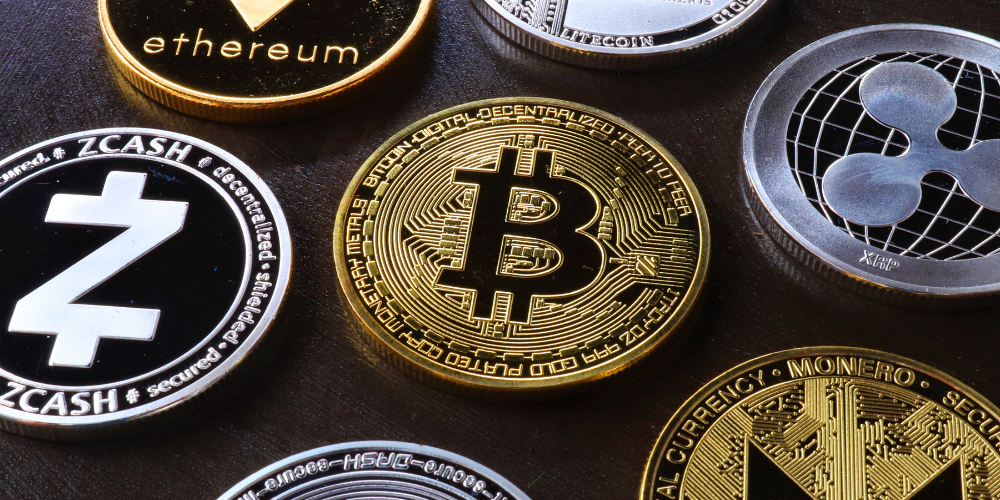After a dismal performance in 2022, the crypto market kicked off 2023 with a bang. Bitcoin and many other major cryptocurrencies posted impressive gains last month. In fact, few cryptocurrencies were in the red for January. Improving macroeconomic conditions, including moderating inflation and a stabilizing job market, helped boost investor confidence all around. Let’s take a look at the 10 worst-performing cryptocurrencies in Jan. 2023.
Q4 2022 hedge fund letters, conferences and more
The 10 Worst-Performing Cryptocurrencies In Jan. 2023
We used the January return data from coinmarketcap.com to rank the 10 worst-performing cryptocurrencies in Jan. 2023. We only considered cryptocurrencies with a market capitalization of more than $400 million as of Feb. 1 for our list of the 10 worst-performing cryptocurrencies in Jan. 2023.
We have also excluded stablecoins from our list of the 10 worst-performing cryptocurrencies in Jan. 2023.
-
XRP (XRP, 22%)
XRP offers an array of payment-related applications and use cases. The token is up by more than 3% in the last 60 days, bringing its 90-day gain to almost 3%. As of the time of this writing, XRP is trading at around $0.3831, giving it a market capitalization of more than $19 billion. XRP has an all-time high of $3.84 (Jan. 2018) and an all-time low of $0.002802 (July 2014).
-
Monero (XMR, 20%)
Launched in 2014, Monero ensures transactions take place privately and anonymously. XMR is up by more than 4% in the last 60 days, bringing its 90-day gain to more than 21%. As of the time of this writing, XMR is trading at around $156.44, giving it a market capitalization of more than $2.85 billion. XMR has an all-time high of $517.62 (May 2021) and an all-time low of $0.213 (Jan 2015).
-
BitTorrent-New (BTT, 18%)
Purchased by blockchain platform TRON in July 2018, BTT is a decentralized, peer-to-peer (P2P) file-sharing and torrent platform. BTT is up by almost 4% in the last 60 days but remains in the red for the last 90 days, with a decline of more than 1%. As of the time of this writing, BTT is trading at around $0.0000007045, giving it a market capitalization of more than $670 million. BTT has an all-time high of $0.000003054 (Jan. 2022) and an all-time low of $0.0000006155 (Dec. 2022).
-
TRON (TRX, 16%)
Launched in 2017, TRX facilitates the creation of a decentralized internet and allows developers to create dApps. TRX is up by more than 18% in the last 60 days, bringing its 90-day gain to nearly 15%. As of the time of this writing, TRX is trading at around $0.0632, giving it a market capitalization of more than $5.79 billion. TRX has an all-time high of $0.3004 (Jan. 2018) and an all-time low of $0.001091 (Sept. 2017).
-
Terra Classic (LUNC, 15%)
Launched in April 2019, Terra Classic is a blockchain protocol that uses fiat-currency-pegged stablecoins to support a price-stable global payments system. LUNC is down by almost 2% over the last 60 days but remains in the red for the last 90 days, down almost 13%. As of the time of this writing, LUNC is trading at around $0.0001628, giving it a market capitalization of more than $965 million. LUNC has an all-time high of $119.18 (Apr. 2022) and an all-time low of $0.00001675 (May 2022).
-
Bitcoin SV (BSV, 6%)
BSV emerged in 2018 after a hard fork of Bitcoin Cash (BCH), and it aims to meet the original vision of the Bitcoin protocol. BSV is down by over 5% in the last 60 days, although it remains up by almost 3% for the last 90 days. As of the time of this writing, BSV is trading at around $40.81, giving it a market capitalization of more than $786 million. BSV has an all-time high of $491.64 (Apr. 2021) and an all-time low of $35.13 (Nov. 2022).
-
Toncoin (TON, 6%)
Developed in 2018, TON is a decentralized layer-one blockchain that allows users to buy, send and store funds. TON is up by over 6% over the last 60 days, capping its 90-day gain at almost 38%. As of the time of this writing, TON is trading at around $2.12, giving it a market capitalization of more than $2.6 billion. TON has an all-time high of $5.84 (Nov. 2021) and an all-time low of $0.3906 (Sept. 2021).
-
PAX Gold (PAXG, 5%)
Launched in September 2019, PAXG is a gold-backed cryptocurrency that allows traders to invest easily in gold. PAXG is up by almost 3% in the last 60 days, bringing its 90-day gain to more than 4%. As of the time of this writing, PAXG is trading at around $1,837.87, giving it a market capitalization of more than $498 million. PAXG has an all-time high of $3,487.68 (Apr. 2020) and an all-time low of $1,387.98 (Oct. 2019).
-
Huobi Token (HT, 3%)
First launched in January 2018, HT is the native token of the cryptocurrency exchange Huobi Global. HT is down by over 19% in the last 60 days, which dragged its 90-day return into the red, with a decline of almost 4%. As of the time of this writing, HT is trading at around $5.02, giving it a market capitalization of more than $813 million. HT has an all-time high of $39.81 (May 2022) and an all-time low of $0.8903 (Jan. 2019).
-
UNUS SED LEO (LEO, -4%)
Launched in May 2019, LEO is a utility token that's used across the iFinex ecosystem. LEO is down by more than 12% for the last 60 days, bringing its 90-day decline to almost 16%. As of the time of this writing, LEO is trading at around $3.35, giving it a market capitalization of more than $3.19 billion. LEO has an all-time high of $8.04 (Feb. 2022) and an all-time low of $0.8036 (Dec. 2019).






